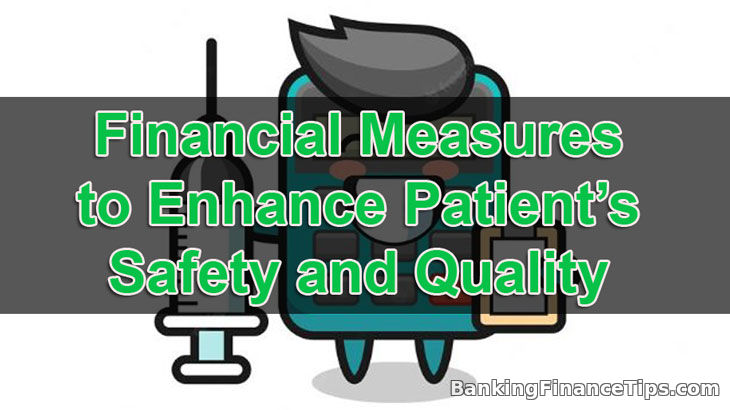
The top companies keep tabs on both financial metrics and product quality advancement. They pay close attention to how adjustments to the production or service processes effect the bottom line. Teams working on quality improvement consult with or include the accountants of these companies. They want to know whether altering a process to increase quality is prohibitively expensive, has a significant impact on the bottom line, or reduces costs while enhancing the good or service (which commonly happens).
This strategy should be used by healthcare facilities. TransforMed is one QI medical website that supports this. The American Academy of Family Physicians' Advanced Medical Home concept is being adopted by primary care locations, and the TransforMed website documents their development and successes. The authors support a disciplined financial management approach for practice management that incorporates cost-benefit analysis, efficient coding and invoicing, and revenue augmentation. An economic case for the Advanced Medical Home has not yet been established, despite the fact that TransforMed supports financial tools, according to a white paper by the American College of Physicians. They don't seem to have taken all of their own counsel to heart.
The emphasis is incorrect for many people who do track financial statistics. They focus on only one or two measurements, which can result in subpar procedures and perceptions, rather than thinking broadly, which entails having a budget and tracking a wide range of accounting measures to assess the cumulative effect on the bottom line over time. This could be, for example, the revenue generated by the particular patient. It makes good business sense for some doctors and primary care office administrators to prevent personnel from spending too much time with patients on whom they anticipate losing money. Primary care doctors allegedly don't always give chronic care patients the attention they require since doing so would be financially detrimental. Advocates of the Chronic Care Model claim that their strategy improves finances or is budget neutral, but this lack of focus or concentration on the insufficient measures prevents people from seeing the full impact of other approaches in the healthcare context. This is also true of hospitals. Too many hospitals just pay attention to the department undertaking a process transformation when tracking savings from quality projects, neglecting to consider the broader impact on the hospital's daily operations.
Focusing excessive attention on pay-for-performance (P4P) goals in order to increase income is another new possible trap for healthcare professionals in budgeting and finances. The results of pay-for-performance programs are inconsistent, according to a recent Robert Wood Johnson Foundation research, "Paying for quality: Understanding and assessing physician pay-for-performance initiatives" (available for free from the Foundation; see their website). For instance, there might be a number of P4P projects from different payers in one particular area, which could result in goals and procedures that are at odds with one another. According to the analysis, P4P revenue may not be profitable and does not contribute significantly to the overall income of the healthcare website. Any website looking to increase revenue through P4P programs should be careful to monitor the effects on both patient health and a reliable set of financial metrics.
What should you measure, then, in order to evaluate your website's financial situation and the effects of fresh quality-improving initiatives? In reality, there are lots of reliable metrics to follow. Although they are an excellent place to start, the IRS reporting requirements for business income and spending are hardly sufficient. Due to their training, hospital accountants are typically better conversant with other effective tracking techniques. If you are in a primary care facility, you might want to get in touch with an accountant who focuses on healthcare income and expenses to assist with setting up a system that your bookkeeper can use. Although the publications do not include how to utilize quality improvement tools in conjunction with financial measures, I have also found two excellent free articles from the American Academy of Family website that provide numerous helpful metrics and ways of implementing the measures. The papers, for instance, don't go into detail about how process reform might increase productivity in the coding and billing division. The authors of the two papers are Albert Y. Yu and Jonathan E. Rodnick, and their titles are "Look Beyond Your Practice's Bottom Line" and "Three Steps to an Effective Practice Budget" (Keith Borglum). Some of the actions they advise are:
—profit per FTE doctor
—FTE physician staff hours
—site's price per square foot
—total pay per FTE employee
—units of work revenue per encounter.
A healthcare facility's financial stability is ensured by maintaining attention on a solid set of financial metrics. This "results in a smoother, more profitable, less stressful practice," according to the Borglum. Combining financial metrics with attempts to enhance quality results in more profitability as well as better patient satisfaction and health. By focusing on the proper economic metrics and quality improvement, SSM Health Care of St. Louis, a Baldrige Award winner, has raised its share of the St. Louis market over three years to 18 percent while three of its competitors have lost market share. Fewer than 1% of all U.S. hospitals have an AA investment grade, which the group has maintained for four years running. By keeping this grade, the system has reduced borrowing costs significantly, increased profitability, and enhanced patient happiness and health.
In general, I argue that many healthcare facilities fail to implement an effective financial system to monitor the effectiveness of their improvement initiatives, and that even when they do, they frequently use the wrong or insufficient metrics and fail to include accountants in all QI teams. The payback will be enormous in terms of the bottom line, patient health and pleasure, and having enough time to complete key tasks if they do employ excellent financial measures to monitor the financial health of their respective sites.